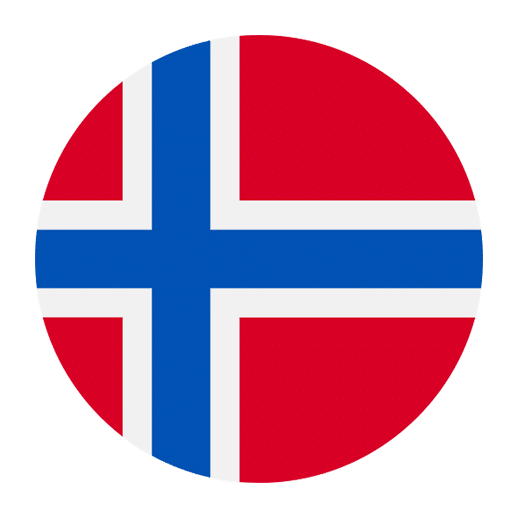Navigating your way through a new country can be both exciting and challenging. Norway, with its stunning landscapes and friendly people, is no exception. One useful skill to have when traveling in Norway is the ability to ask for and understand directions. Knowing some essential phrases in Norwegian will not only help you get to your destination but also enrich your travel experience by allowing you to engage more deeply with locals. In this article, we’ll cover essential Norwegian phrases for giving and asking for directions.
Basic Vocabulary for Directions
Before diving into full phrases, it’s useful to start with some basic vocabulary. Here are some common words and phrases related to directions:
– Rett frem – Straight ahead
– Til høyre – To the right
– Til venstre – To the left
– Tilbake – Back
– Her – Here
– Der – There
– Nær – Near
– Langt – Far
– Gate – Street
– Veien – Road
– Hjørne – Corner
– Kryss – Intersection
Asking for Directions
When you need to ask for directions, it’s important to be polite. Norwegians appreciate good manners, so starting your question with a polite phrase can make a significant difference. Here are some useful phrases for asking for directions:
– Unnskyld, kan du hjelpe meg? – Excuse me, can you help me?
– Kan du vise meg veien til …? – Can you show me the way to …?
– Hvordan kommer jeg til …? – How do I get to …?
– Er det langt til …? – Is it far to …?
– Hvor er nærmeste …? – Where is the nearest …?
For example, if you are looking for the nearest train station, you might say:
– Unnskyld, kan du hjelpe meg? Hvor er nærmeste togstasjon? – Excuse me, can you help me? Where is the nearest train station?
Understanding Responses
When someone responds to your question, they might use a variety of phrases to describe the directions. Here are some common responses you might hear:
– Gå rett frem – Go straight ahead
– Ta til høyre – Take a right
– Ta til venstre – Take a left
– Det er på hjørnet – It’s on the corner
– Fortsett til lyskrysset – Continue to the traffic light
– Det er i nærheten av … – It’s near …
For instance, if you are given directions to a museum, you might hear:
– Gå rett frem, ta til høyre ved lyskrysset, og museet er på hjørnet – Go straight ahead, take a right at the traffic light, and the museum is on the corner.
Giving Directions
If you are familiar with your surroundings, you might find yourself in a position to give directions. Here’s how you can do that effectively in Norwegian:
– Du må gå rett frem – You must go straight ahead
– Ta til høyre ved neste kryss – Take a right at the next intersection
– Ta til venstre ved neste gate – Take a left at the next street
– Det ligger rett ved siden av … – It’s right next to …
– Det er en fem minutters gange – It’s a five-minute walk
For example, if someone asks you for directions to a café, you could say:
– Du må gå rett frem, ta til venstre ved neste kryss, og kafeen ligger rett ved siden av bokhandelen – You must go straight ahead, take a left at the next intersection, and the café is right next to the bookstore.
Using Landmarks
Using landmarks can make giving and receiving directions much easier. Here are some common landmarks and how to refer to them in Norwegian:
– Kirke – Church
– Butikk – Store
– Park – Park
– Bensinstasjon – Gas station
– Hotell – Hotel
– Restaurant – Restaurant
For instance:
– Restauranten ligger rett ved siden av kirken – The restaurant is right next to the church.
Practice Makes Perfect
The best way to become comfortable with these phrases is through practice. Here are a few exercises to help you get started:
1. **Role Play**: Partner up with a friend and take turns asking for and giving directions using the phrases above.
2. **Map Exercises**: Use a map of a Norwegian city and practice giving directions to different landmarks.
3. **Listening Practice**: Watch Norwegian travel videos and try to pick out phrases related to directions.
Example Scenarios
To help you practice, here are a few common scenarios you might encounter, along with the Norwegian phrases you could use:
**Scenario 1: Finding a Restaurant**
– You: Unnskyld, kan du hjelpe meg? Hvor er nærmeste restaurant? (Excuse me, can you help me? Where is the nearest restaurant?)
– Local: Gå rett frem, ta til høyre ved neste kryss, og restauranten er på hjørnet (Go straight ahead, take a right at the next intersection, and the restaurant is on the corner).
**Scenario 2: Getting to the Train Station**
– You: Hvordan kommer jeg til togstasjonen? (How do I get to the train station?)
– Local: Ta til venstre ved lyskrysset, gå rett frem, og togstasjonen er på høyre side (Take a left at the traffic light, go straight ahead, and the train station is on the right side).
Common Mistakes to Avoid
When learning a new language, it’s easy to make mistakes. Here are a few common pitfalls to watch out for when asking for or giving directions in Norwegian:
1. **Mispronunciation**: Pronouncing words incorrectly can lead to misunderstandings. Practice the pronunciation of key phrases to ensure you are understood.
2. **Using English Grammar**: Norwegian sentence structure can be different from English. Pay attention to word order when constructing sentences.
3. **Forgetting Politeness**: Always start with a polite phrase like “Unnskyld” (Excuse me) to make a good impression.
4. **Ignoring Context**: Make sure you understand the context of the conversation. Sometimes directions might include landmarks or colloquial terms that you may not be familiar with.
Additional Resources
To further enhance your learning, consider using the following resources:
– **Language Apps**: Apps like Duolingo and Babbel offer practice exercises specifically for learning Norwegian phrases.
– **Phrasebooks**: A good Norwegian phrasebook can be an invaluable resource when traveling.
– **Online Forums**: Join language learning forums or social media groups to practice with native speakers.
– **Local Classes**: If you have the opportunity, taking a Norwegian class can provide structured learning and immediate feedback.
Conclusion
Mastering the basics of asking for and giving directions in Norwegian can significantly enhance your travel experience in Norway. Not only will it help you navigate more easily, but it will also allow you to connect more meaningfully with locals. Remember to practice regularly, be polite, and don’t be afraid to make mistakes. With time and effort, you’ll find yourself becoming more confident and proficient in using Norwegian for directions. Happy travels!

